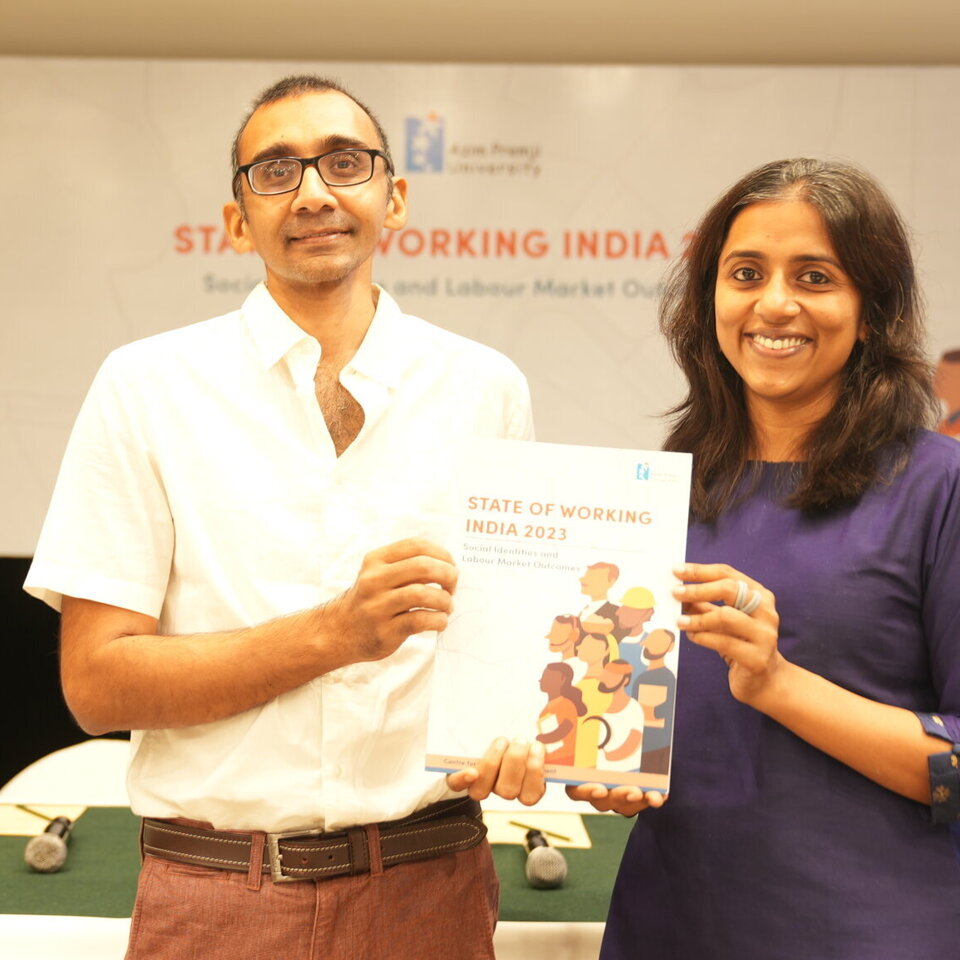Labour markets has shown better intergenerational mobility, increased regular wage workers and narrowed caste based segregation, according to State of Working India report 2023
New Delhi, NFAPost: India’s labour market has shown considerable progress in key areas such as regular wages, intergenerational mobility, and reductions in both caste-based segregation and gender disparities since the 1980s, according to the latest report by the Centre for Sustainable Development at Azim Premji University.
The report, titled ‘State of Working India 2023’, highlights that the proportion of salaried work increased to 25 per cent in 2018, up from 15% in 2004.
Over the same period, the share of men in regular jobs rose from 18 to 25 per cent, while the share for women grew from 10 to 25 per cent. An estimated three million regular wage jobs were created annually between 2004 and 2017, and five million jobs were added annually between 2017 and 2019.
Amit Basole, a professor at Azim Premji University, notes that there has also been a rise in the share of formal jobs, indicating greater formalisation of the economy.
“The employee benefits, such as health coverage and pensions, have also seen an increase between 2017 and 2019, compared to earlier figures,” he added. However, Basole pointed out that the rate of job creation has slowed down due to the Covid-induced economic downturn.
The report relies on official datasets including the National Statistical Office’s Employment-Unemployment Surveys, Periodic Labour Force Surveys, National Family Health Surveys, Annual Survey of Industries, and Economic and Population Censuses, as well as the India Working Survey 2020.
In terms of intergenerational mobility, the report shows a positive trend over the last 15 years. In 2004, 80 per cent of the sons of casual wage workers were themselves employed in casual jobs. By 2018, this had fallen to 53% among non-scheduled castes and tribes (non-SC/ST), and 75.6 per cent among SC/ST workers.
The report also notes that caste-based segregation in industries has improved since the early 1980s. For instance, SC workers were previously over-represented by five times in waste-related work and by over four times in leather-related work; these figures have now declined to 1.6 times and 1.4 times, respectively, according to the 2011 census data.
Despite these positive trends, challenges remain, such as the under-representation of marginalised communities among entrepreneurs and a decline in real incomes for self-employed women due to the pandemic.
“Female employment rates have increased since 2019 after remaining stagnant since 2004, primarily due to a distress-led rise in self-employment. As a result, real earnings from self-employment have declined and are only 85 per cent of what they were in the April-June 2019 quarter,” the report concludes.





